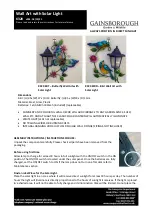
Technical Manual
Airbridge BTS3606A CDMA Base Station
System Description
Chapter 2 Product Features
2-2
&
Note:
l
The BTS3606A supports the CDMA2000 1x and 1xEV-DO by using different types of channel
processing boards.
l
The Channel Element (CE) pool is employed in the CDMA2000 1x, but not in the 1xEV-DO.
l
The BTS3606A supports the single-carrier and multi-carrier by using different types of transceiver
modules.
2.2 Large-scale Coverage
The BTS3606A can cover a wide area thanks to its excellent performance of
transceiving.
I. Receiver sensitivity
The main/diversity receiving technology is employed to optimize the receiving
performance. In the case of RC3, the receiver sensitivity of the BTS3606A is better
than -127 dBm in the single-carrier mode and better than –126 dBm in the multi-carrier
mode.
II. Transmit power (measured at the antenna port of the cabinet)
l
Single-carrier mode
The maximum average transmit power is 25 W.
When the large-power combiner is configured, two powers can be combined to
output an average transmit power up to 50 W.
l
Multi-carrier mode
When the BTS3606 operates at 450 MHz, it does not support the multi-carrier.
When the BTS3606 operates at 800 MHz, the maximum average transmit power
is 50 W.
When the BTS3606 operates at 1900 MHz, the maximum average transmit power
is 40 W.
For details, see section 7.3 , “Transmitter and Receiver Specifications”.
III. ODU3601C cascading
The BTS3606A can be cascaded with the ODU3601C through optical fibers. The
BTS3606A can provide a maximum of 12 optical interfaces.
Each optical interface can connect to three levels of ODU3601Cs either in the
CDMA2000 1X or CDMA2000 1xEV-DO mode. In this way, the signal coverage area is
effectively enlarged.
















































